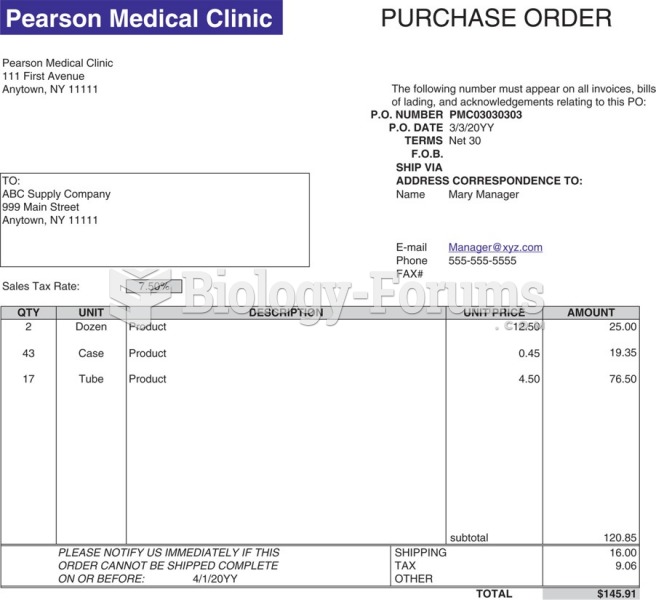|
|
|
Acute bronchitis is an inflammation of the breathing tubes (bronchi), which causes increased mucus production and other changes. It is usually caused by bacteria or viruses, can be serious in people who have pulmonary or cardiac diseases, and can lead to pneumonia.
There are 60,000 miles of blood vessels in every adult human.
The heart is located in the center of the chest, with part of it tipped slightly so that it taps against the left side of the chest.
Eating food that has been cooked with poppy seeds may cause you to fail a drug screening test, because the seeds contain enough opiate alkaloids to register as a positive.
According to the FDA, adverse drug events harmed or killed approximately 1,200,000 people in the United States in the year 2015.






